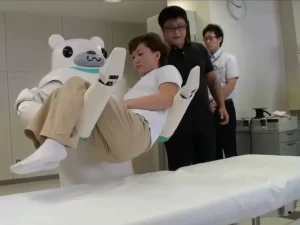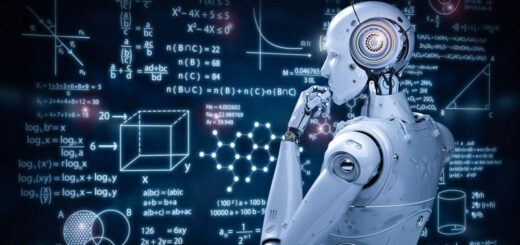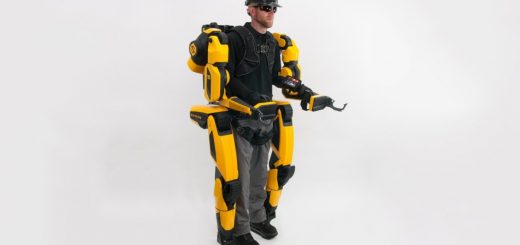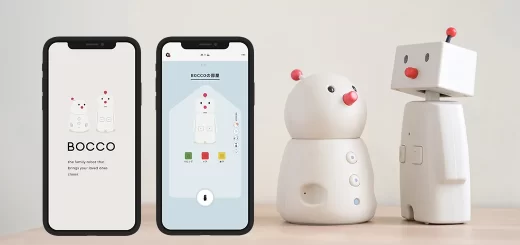Robear robots review, features, advantages and disadvantages
Robear is equipped with cameras and sensors that can monitor a person’s vital signs and detect falls. Robear is a powerhouse! This 309-pound (140 kg) robot can lift up to 220 pounds (100 kg), making it easy to assist with lifting and transferring patients.
Robear robots
Robear is a bipedal humanoid robot designed by the RIKEN-TRIANGLE research group in Japan. It’s named after the Japanese word for “brown bear,” and it’s designed to assist elderly and disabled people with daily tasks. Robear‘s movements are controlled by advanced actuators and sensors, allowing it to handle patients with incredible gentleness and precision.
Robear is the third generation of nursing care robots from its creators, Riken and Sumitomo Riko. Each version gets better and cuddlier, proving that robots can have hearts (or at least good design principles). Robear is designed to help ease the burden on caregivers and improve the quality of life for the elderly.
Robear can play a vital role in healthcare. The need for elder care solutions is a global challenge, Robear robots bring comfort and assistance to people in need, regardless of their location. Robear robots are more than just machines; they can help us care for each other in new and innovative ways.
Robear robots are adorable robotic nurses with a mission to revolutionize elder care. Robear boasts a friendly polar bear design, complete with a cartoonish face and soft, huggable fur. This welcoming appearance helps reduce patient anxiety and fosters a more comfortable caregiving experience.
Robear isn’t just a prototype. It can assist overworked caregivers and empower the elderly to maintain independence and dignity. Robear can be a lifesaver in more ways than one. Its built-in sensors can detect obstacles, avoid collisions, monitor vital signs, and alert medical personnel to potential health concerns before they become serious.
Robear‘s skillset goes beyond lifting and monitoring. It can help with rehabilitation exercises, fetch objects, and play music, Robear‘s designers understand space constraints. Its legs retract for a compact footprint, allowing it to navigate the smallest of rooms and apartments.
Robear is constantly being improved. Researchers are working on giving it more dexterity, better speech recognition, and the ability to understand human emotions. Robear can improve the lives of the elderly and infirm. This cuddly caregiver might be the key to a happier, healthier future for all.
Robear robots are furry friends, gentle giants, and lifesavers all rolled into one. They will be a familiar sight in homes and healthcare facilities, bringing comfort, care, and a touch of teddy bear magic to the lives of those who need it most.
Robear can assist with transferring people between beds and wheelchairs. Robear‘s movements are designed to be slow and smooth, with built-in sensors to adjust force based on the person’s weight and needs. Those stubby legs aren’t just for cuteness! They retract for stability when Robear needs to lift or transfer someone, ensuring a safe and secure experience.
Robear can measure vital signs, monitor movements, and remind people to take their medication. Robear isn’t just a machine; Its creators programmed it with playful gestures and vocalizations to make interactions more engaging and enjoyable.
While Robear is primarily designed for elder care, its technology could be adapted for other applications, such as physical therapy or rehabilitation. maybe one day we’ll see Robear robots helping people of all ages!
Advantages of Robear robots
Robear robots can take on physically demanding tasks such as lifting and transferring patients, reducing the strain on human caregivers and preventing injuries. This is beneficial in countries with aging populations facing caregiver shortages.
Robear‘s movements are designed to be gentle and precise, minimizing the risk of pain or injury to patients during transfers and other interactions. the robot’s teddy bear-like appearance can be less intimidating for some patients compared to traditional medical equipment.
Robear can be equipped with sensors to monitor vital signs, medication adherence, and other health parameters. This data can be used by caregivers to provide more personalized and effective care. using Robear robots can save money on healthcare costs. This is because they can help to reduce the need for human caregivers and can help to prevent accidents and injuries.
Robear can assist with repetitive tasks, freeing up caregivers to focus on more complex aspects of patient care. Robear can provide basic companionship and social interaction for lonely or isolated individuals. Robear can interact with patients through a tablet attached to its chest, allowing for video calls and other forms of communication.
Disadvantages of Robear robots
Robear is very expensive to produce. which can make them unaffordable for many people. This makes it difficult for widespread adoption in healthcare settings. Robear‘s current capabilities are limited compared to human caregivers. It can struggle with tasks that require dexterity, complex decision-making, or understanding of human emotions.
The use of robots in healthcare raises ethical concerns about the potential for dehumanization of care and the replacement of human interaction. there are concerns about data privacy and security when using robots to collect and store patient information.
Some patients and caregivers may be hesitant to trust a robot with their care. Building trust and acceptance will be crucial for the successful integration of Robear into healthcare settings.
While Robear can perform some tasks, it cannot provide the same level of care as a human caregiver. It cannot understand complex emotions and provide emotional support. Although Robear robots are equipped with safety features, there is still a risk that they could malfunction or cause harm to patients.
Robear is still under development, and some technical limitations need to be addressed. For example, its movements can be slow and jerky, and it can sometimes have difficulty navigating obstacles. Robear robots are not able to perform all of the tasks that human caregivers can do. they cannot provide emotional support or companionship.
Robear robot emotions
Robear is a Japanese caregiving robot developed by RIKEN and Sumitomo Riko to assist in elderly care, particularly for lifting patients. While it has a soft, bear-like appearance to create a friendly and non-threatening presence, Robear does not have emotions in the way humans or even some advanced AI-powered robots do.
Emotional Design of Robear
Robear’s bear-like face and rounded features are designed to be comforting and approachable for elderly patients. Its gentle and precise motion control system allows it to move in a way that feels safe and reassuring rather than mechanical or forceful.
Unlike robots with emotional recognition or response capabilities (such as SoftBank’s Pepper), Robear does not have built-in emotions or the ability to recognize human emotions. The goal is to make patients feel safe and at ease through its design rather than through direct emotional engagement.
While Robear itself does not express emotions, its design philosophy aims to create an emotional response in users—mainly trust and comfort—through its soft aesthetics and careful movements.
You can follow Science Online on Youtube from this link: Science online
Top Trends on Robear robots and What can Robear robot do?
Healthcare robotics, Nursing care robots review, types, advantages, disadvantages, and uses
The importance and uses of robots in medicine
Robotic surgery cons, pros, uses and How does robotic surgery work?
Artificial intelligence in medical field advantages & how AI medical diagnosis changes medicine
Surgical robot types, advantages, disadvantages, How is robotic surgery different from traditional
Applications of Artificial intelligence in the medical field and Healthcare
Importance of Artificial intelligence in healthcare and medicine
Domestic robot or Service Robot types, advantages and disadvantages




